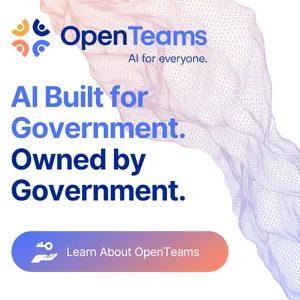The Atlantic hurricane season, which will continue until the end of November, officially began June 1. The season has started slower than usual, but the National Oceanic and Atmospheric Administration (NOAA) forecast is ominous. The 2024 season is predicted to be unusually active, with 17 to 25 named storms and eight to 13 hurricanes. By comparison, an average season in recent decades has comprised of about 14 named storms and seven hurricanes.
Another menacing weather prediction comes from climatologists at the well-respected Colorado State University. They project officials and citizens should anticipate and prepare for 23 named storms and 11 hurricanes this season.
Hurricanes cause damage that requires billions in cleanup and repair work. The federal weather authority NOAA reports hurricanes caused between $3 billion and $4 billion in damage last year. Flooding resulted in even more costly damages the previous year – about $7 billion.
In anticipation of these weather-related events, the Federal Emergency Management Agency (FEMA) announced $300 million of available funding for 2024. This support is available for flood resilience projects. The Bipartisan Infrastructure Law (BIL) still has more than $2 billion for sustainability projects through the Flood Mitigation Assistance program. Still, this funding is available only through the federal government’s 2026 fiscal year.
Officials in Milton, West Virginia, have announced the upcoming launch of a construction project that will deliver a floodwall to prevent water from overflowing into the city’s central business district. The downtown area is currently vulnerable to flooding, and significant damage has occurred to commercial buildings and property. The $190 million floodwall project will be designed to reduce the chances of significant flooding in the downtown area to 0.4%.
To prevent future flooding, an earthen levy and a concrete wall will be constructed. Water from the river will also be diverted so that if flooding occurs, it will be directed away from the central business district. Still, there is no official timeline for work to begin in the design phase, but this effort will proceed soon.
A $50 million flood mitigation project will also be launched in Alexandria, Virginia. It is currently in the design phase, and prospective bidders can expect to see solicitation documents by 2025. The project will be engineered to protect multiple vulnerable streets and intersections from frequent flooding from stormwater. The existing infrastructure is no longer sufficient to manage yearly anticipated rainfall. Project components will include installing additional sewers along key roads, a new outfall to direct water into a nearby river and green initiatives to improve water quality. The final design will include a site survey, storm sewer modeling and construction drawings.
An upcoming $42 million project in Oho will be located in the Eagle Creek Flood Basin about four miles south of Findley. It will be designed to reduce flood risk both in Findley and throughout Hancock County. The project will capture overflow runoff from storms, the construction of an earthen embankment dam, and the creation of a dry storage basin. During rainstorms, peak water flow rates from Eagle Creek and Blanchard River will be lower. It will also reduce downstream flooding and minimize flood damage. Primary and secondary spillways and drainage improvements will be included in the effort. Preliminary work clearing trees around the site was completed in February, and once the permitting process is completed, solicitations for bidding will be released, but the timeline for work to commence may be as late as mid-2025.
A comprehensive three-phase flood mitigation project is planned for Boulder, Colorado. The first phase will begin in the South Boulder Creek area, and that effort carries a $63 million cost estimate. This objective is to protect 1,100 homes and 2,300 downstream residents from a 100-year flood event.
The project will call for a flood wall and spillway to be constructed and flood mitigation infrastructure installed at the University of Colorado Boulder’s South Campus. The project will alter the boundaries of the 100-year floodplain so structures are no longer at risk. The region suffered from severe flooding in 2013 when floodwaters rose above U.S. Highway 36 and more than 11,000 people had to be evacuated. The project remains in the planning phase as officials wait for permitting to be completed. Construction on the project is expected to launch in 2025, but it could be delayed depending on the permitting process. Two other related flood-mitigation projects will be launched near Goose Creek and Gregory Canyon.
A $23 million project in Delaware will focus on the Taylor Bridge near the city of Townsend. It has federal funding support and will focus on the Taylor Bridge and the surrounding area. This part of the state is vulnerable to significant and regular flooding, and the federal government is providing funding support for this project.
About 2,000 feet of roadway on both sides of the 60-year-old bridge will be raised and the bridge will then be replaced. With the lowest elevation level of any U.S. state, Delaware is particularly vulnerable to any rise in sea level. With only three piers instead of the current nine, the new structure will allow more water to pass under the new bridge. Piers will be made of reinforced concrete. Additionally, the shoulders of all nearby roads will be widened, sidewalks will be expanded, and several retaining walls will be constructed for additional flood control.
As this year’s hurricane season proceeds, public officials throughout America are rushing to finish projects already underway. Still, new remediation and sustainability projects will be abundant in almost every state over the next several years.












